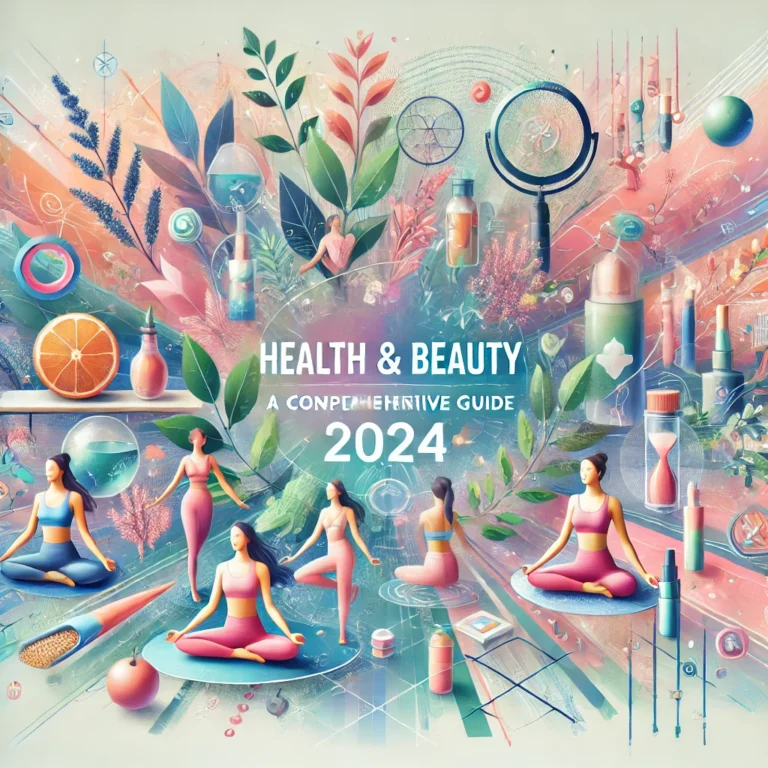In today’s fast-paced world, stress has become a ubiquitous part of daily life for many individuals. Whether it stems from work pressures, relationship challenges, financial worries, or health concerns, the impact of stress on physical, mental, and emotional well-being cannot be understated. There are numerous techniques and strategies available to help manage and alleviate stress, allowing individuals to navigate life’s challenges with greater resilience and equanimity.
In this comprehensive guide, we will explore five helpful stress management techniques: deep breathing exercises, progressive muscle relaxation (PMR), mindfulness meditation, physical activity, and social support. Each technique offers unique benefits and approaches to reducing stress, catering to different preferences and needs. By understanding and incorporating these techniques into your daily routine, you can cultivate a greater sense of calm, balance, and well-being, even in the face of adversity.
Five Helpful Stress Management Techniques

Deep Breathing Exercises:
Deep breathing triggers the body’s relaxation response, reducing stress and promoting a sense of calm. To practice deep breathing, sit or lie down in a comfortable position, close your eyes, and take slow, deep breaths through your nose, allowing your abdomen to rise as you inhale and fall as you exhale. Repeat this for several minutes, focusing on the rhythm of your breath. Deep breathing exercises can relieve stress through several mechanisms:
Activating the Relaxation Response:
Deep breathing triggers the body’s relaxation response, which is the opposite of the stress-induced fight-or-flight response. When you take slow, deep breaths, it signals to your brain that it’s safe to relax, leading to a decrease in the production of stress hormones like cortisol and adrenaline.
Reducing Muscle Tension:
Stress often manifests physically as tension in the muscles, particularly in the neck, shoulders, and back. Deep breathing encourages these tense muscles to relax, alleviating physical symptoms of stress and promoting a sense of ease and comfort in the body.
Increasing Oxygen Flow:
Deep breathing involves taking slow, deliberate breaths that fully expand the lungs and increase oxygen intake. This oxygenates the bloodstream, improving circulation and supplying more oxygen to the brain and other vital organs. Increased oxygen levels can enhance cognitive function, reduce feelings of fatigue, and promote overall well-being.
Calming the Mind:
Deep breathing requires focused attention on the breath, which helps distract the mind from racing thoughts and worries that contribute to stress. By directing your focus to the rhythm of your breath, you cultivate mindfulness and present-moment awareness, allowing you to let go of stressors and find a sense of inner calm.
Regulating the Autonomic Nervous System:
The autonomic nervous system controls involuntary bodily functions, including heart rate, blood pressure, and digestion. Deep breathing activates the parasympathetic nervous system, often referred to as the “rest and digest” system, which promotes relaxation and counteracts the sympathetic nervous system’s stress response. This balance between the two branches of the autonomic nervous system helps restore equilibrium in the body and mind.
Overall, deep breathing exercises provide a simple yet effective way to manage stress by promoting relaxation, reducing physical tension, increasing oxygenation, calming the mind, and regulating the body’s stress response. Integrating deep breathing into your daily routine can help you build resilience to stress and enhance your overall sense of well-being.
Progressive Muscle Relaxation (PMR):
PMR involves the steps of tensing and relaxing different muscle groups in the body to release physical tension and promote relaxation. Start by tensing a specific muscle group, such as your shoulders or fists, for a few seconds, then release and let the tension melt away as you exhale. Move through each muscle group systematically, from head to toe, paying attention to the sensations of relaxation. Progressive Muscle Relaxation (PMR) is a stress management technique that involves systematically tensing and relaxing different muscle groups in the body. Here’s how PMR can relieve stress:
Reduction of Physical Tension:
Stress often leads to the buildup of tension in the muscles, particularly in areas like the neck, shoulders, and jaw. By systematically tensing and then relaxing these muscle groups during PMR, you can release this physical tension. This process helps to alleviate discomfort and promotes a sense of physical relaxation and comfort.
Promotion of Relaxation Response:
PMR triggers the body’s relaxation response, which is the physiological counterpart to the stress-induced fight-or-flight response. When you tense a muscle group during PMR, it activates the stress response temporarily. However, when you release the tension, it signals to your body that it’s safe to relax, leading to a decrease in stress hormones like cortisol and adrenaline. This promotes overall relaxation and a sense of calmness.
Enhanced Body Awareness:
PMR requires you to focus your attention on specific muscle groups as you tense and relax them. This heightened awareness of bodily sensations can help you become more attuned to the physical signs of stress and tension in your body. By recognizing these signs early on, you can intervene with relaxation techniques like PMR to prevent stress from escalating.
Mind-Body Connection:
PMR emphasizes the connection between the body and mind. As you engage in the practice, you become more aware of how your thoughts and emotions impact your physical state and vice versa. By deliberately relaxing your muscles, you send signals to your brain that it’s safe to calm down, which can help alleviate psychological stressors as well.
Improved Sleep Quality:
Chronic stress can disrupt sleep patterns and lead to insomnia or restless sleep. PMR before bedtime can help relax your body and mind, making it easier to fall asleep and experience deeper, more restorative sleep. By promoting relaxation and reducing physical tension, PMR can contribute to overall improvements in sleep quality, which is essential for managing stress effectively.
Overall, Progressive Muscle Relaxation (PMR) is a valuable stress management technique that combines physical relaxation with mental focus and awareness. By systematically tensing and relaxing muscle groups, PMR can help reduce physical tension, promote the relaxation response, enhance body awareness, improve sleep quality, and ultimately alleviate stress and anxiety.
Mindfulness Meditation:
Mindfulness meditation entails focusing your awareness on the present moment in a non-judgmental manner. Find a quiet place to sit comfortably, close your eyes, and focus on your breath or a specific sensation in your body. When your mind starts to wander, gently bring your focus back to the present moment. Regular practice of mindfulness meditation can help reduce stress, increase self-awareness, and improve overall well-being. Mindfulness meditation is a process of paying deliberate attention to the present moment without judgment. Here’s how mindfulness meditation can relieve stress:
Increased Awareness:
Mindfulness meditation cultivates a heightened awareness of the present moment, including thoughts, emotions, bodily sensations, and external surroundings. By observing these experiences with curiosity and acceptance, you develop a greater understanding of your stress triggers and patterns, which can empower you to respond more skillfully to stressful situations.
Stress Reduction:
Mindfulness meditation activates the body’s relaxation response, counteracting the physiological effects of stress. By focusing your attention on the breath or other anchor points, you shift away from rumination about past or future stressors and enter a state of calmness and equanimity. This helps reduce the production of stress hormones like cortisol and adrenaline, promoting relaxation and emotional well-being.
Emotional Regulation:
Mindfulness meditation enhances emotional regulation by creating space between stimulus and response. When faced with stressful or challenging situations, you develop the capacity to observe your thoughts and emotions without becoming overwhelmed by them. This allows you to choose how to respond, rather than reacting impulsively out of habit or reactivity.
Mind-Body Connection:
Mindfulness meditation strengthens the connection between the mind and body, fostering greater harmony and balance. As you tune into bodily sensations during meditation, you become more attuned to the physical signs of stress and tension in your body. This awareness enables you to respond with self-compassion and self-care, engaging in relaxation techniques like deep breathing or progressive muscle relaxation to alleviate stress.
Improved Cognitive Function:
Chronic stress can impair cognitive function, leading to difficulties with concentration, memory, and decision-making. Mindfulness meditation has been shown to enhance cognitive abilities by promoting neural plasticity and increasing gray matter density in areas of the brain associated with attention, memory, and emotion regulation. This can help mitigate the cognitive effects of stress and improve overall mental clarity and resilience.
Enhanced Resilience:
Regular practice of mindfulness meditation builds resilience to stress over time. By cultivating a mindset of acceptance, non-judgment, and compassion, you develop the capacity to navigate life’s challenges with greater ease and equanimity. This resilience enables you to bounce back from setbacks more quickly and maintain a sense of balance and well-being amidst adversity.
Overall, mindfulness meditation offers a powerful tool for stress management by fostering present-moment awareness, promoting relaxation, enhancing emotional regulation, strengthening the mind-body connection, improving cognitive function, and building resilience. Integrating mindfulness meditation into your daily routine can help you cultivate a deeper sense of peace and equanimity, even in the midst of life’s inevitable stressors.
Physical Activity:
Engaging in regular physical activity, such as walking, jogging, or yoga, can help reduce stress by releasing endorphins, the body’s natural mood lifters. Engage in moderate exercise for at least 30 minutes most days of the week to enjoy the stress-relieving advantages. Choose activities that you enjoy, and that fit your fitness level. Engaging in regular physical activity is a highly effective way to manage stress and promote overall well-being. Here’s how physical activity can help relieve stress:
Release of Endorphins:
Physical activity triggers the release of endorphins, which are neurotransmitters in the brain that act as natural painkillers and mood elevators. These “feel-good” chemicals can help reduce feelings of stress, anxiety, and depression, promoting a sense of happiness and well-being.
Reduction of Stress Hormones:
Exercise lowers the levels of stress hormones such as cortisol and adrenaline in the body. Cortisol, often referred to as the “stress hormone,” is released in response to perceived threats or stressors. By engaging in physical activity, you can help regulate cortisol levels, preventing them from remaining elevated for prolonged periods, which can contribute to chronic stress.
Muscle Relaxation:
Physical activity can help relieve muscle tension and promote relaxation throughout the body. Activities such as stretching, yoga, or gentle exercises like tai chi can specifically target areas of tension, helping to release tight muscles and alleviate physical symptoms of stress.
Improvement in Sleep Quality:
Regular physical activity has been shown to improve sleep quality, which is essential for stress management. Exercise can help regulate sleep-wake cycles, promote deeper, more restorative sleep, and reduce the incidence of insomnia and other sleep disturbances often associated with stress.
Distraction and Mood Enhancement:
Engaging in physical activity provides a healthy distraction from stressors and negative thoughts. Focusing on the physical sensations of movement, such as the rhythm of your footsteps while walking or the feeling of your muscles working during strength training, can shift your attention away from worries and promote a sense of mindfulness and presence at the moment. Additionally, exercise can elevate mood and boost self-esteem, making you better equipped to cope with stressors.
Promotion of Overall Health:
Regular physical activity offers numerous physical health benefits, including improved cardiovascular health, enhanced immune function, and better management of chronic conditions such as obesity, diabetes, and hypertension. By prioritizing your physical health through exercise, you can build resilience to stress and improve your overall quality of life.
Incorporating a variety of physical activities into your routine, such as aerobic exercise, strength training, flexibility exercises, and recreational activities, can provide comprehensive stress relief and contribute to your overall physical and mental well-being. Aim for at least 30 minutes of moderate-intensity exercise most days of the week to experience the stress-relieving benefits of physical activity
Social Support:
Connecting with friends, family, or a support group can provide emotional support and perspective during times of stress. Sharing your feelings and experiences with others who care about you can help alleviate feelings of isolation and promote a sense of belonging. Whether through phone calls, video chats, or in-person interactions, prioritize nurturing your relationships to build a strong support network. Having a strong social support system is vital for managing stress and maintaining overall well-being. Here’s how connecting with friends, family, or a support group can help relieve stress:
Emotional Validation:
Sharing your thoughts and feelings with supportive individuals can provide emotional validation and reassurance, helping you feel understood, accepted, and valued. Knowing that you’re not alone in your experiences can reduce feelings of isolation and loneliness, which are common contributors to stress.
Perspective and Advice:
Trusted friends, family members, or mentors can offer valuable perspectives and insights on your stressors, helping you gain clarity and identify potential solutions or coping strategies. Sometimes, simply talking through your concerns with someone who cares can provide a fresh perspective and help you see your challenges in a new light.
Practical Assistance:
Social support can involve practical assistance in times of need, such as help with tasks or responsibilities that feel overwhelming. Whether it’s lending a helping hand with chores, running errands, or providing childcare, knowing that you have a support system you can rely on can alleviate stress and lighten your load.
Healthy Distraction and Enjoyment:
Spending time with loved ones or engaging in social activities can serve as a healthy distraction from stressors and provide opportunities for enjoyment and relaxation. Laughter, companionship, and shared experiences can boost mood, reduce tension, and promote a sense of joy and fulfillment.
Sense of Belonging and Connection:
Social support fosters a sense of belonging and connection to others, which is essential for emotional well-being. Feeling connected to a supportive community or network of friends and family members can provide a sense of security and comfort, reinforcing your sense of identity and purpose.
Stress Buffering Effect:
Research has shown that social support acts as a buffer against the negative effects of stress on physical and mental health. Having strong social ties can mitigate the impact of stressors and enhance resilience, helping you bounce back more quickly from adversity and maintain overall well-being.
Opportunities for Self-Disclosure and Processing:
Engaging in meaningful conversations with trusted individuals allows you to express your thoughts and feelings openly, which can be therapeutic and cathartic. Sharing your experiences with others can help you process emotions, gain insights into your reactions, and develop healthier coping strategies for managing stress.
Cultivating and nurturing your relationships with friends, family, and supportive communities is essential for building a strong social support network that can provide comfort, guidance, and encouragement during challenging times. Prioritize spending quality time with loved ones, reaching out for support when needed, and offering support to others in return to foster meaningful connections and promote mutual well-being.
Conclusion:
Managing stress is essential for maintaining a healthy and fulfilling life. By incorporating a combination of deep breathing exercises, PMR, mindfulness meditation, physical activity, and social support into your lifestyle, you can develop a comprehensive toolkit for navigating stress more effectively. Remember that stress management is not a one-size-fits-all approach, so feel free to experiment with different techniques and find what works best for you. With dedication, practice, and support from loved ones, you can cultivate greater resilience, inner peace, and overall well-being in the face of life’s inevitable stressors.



